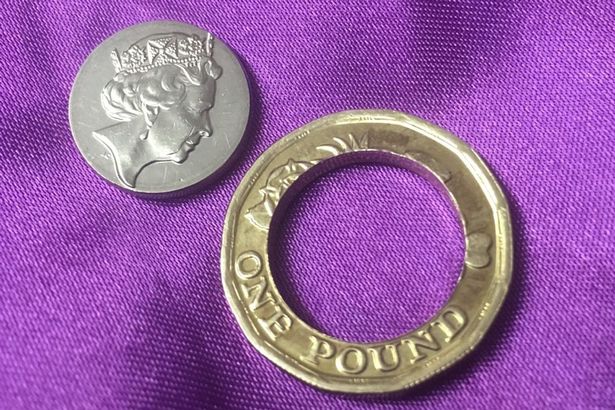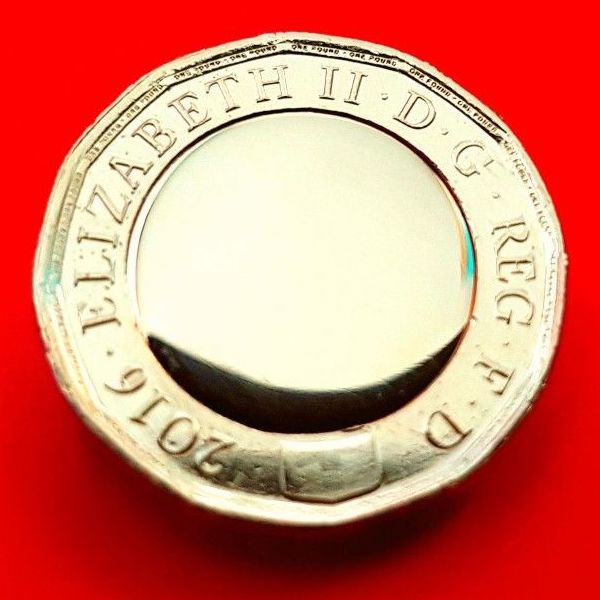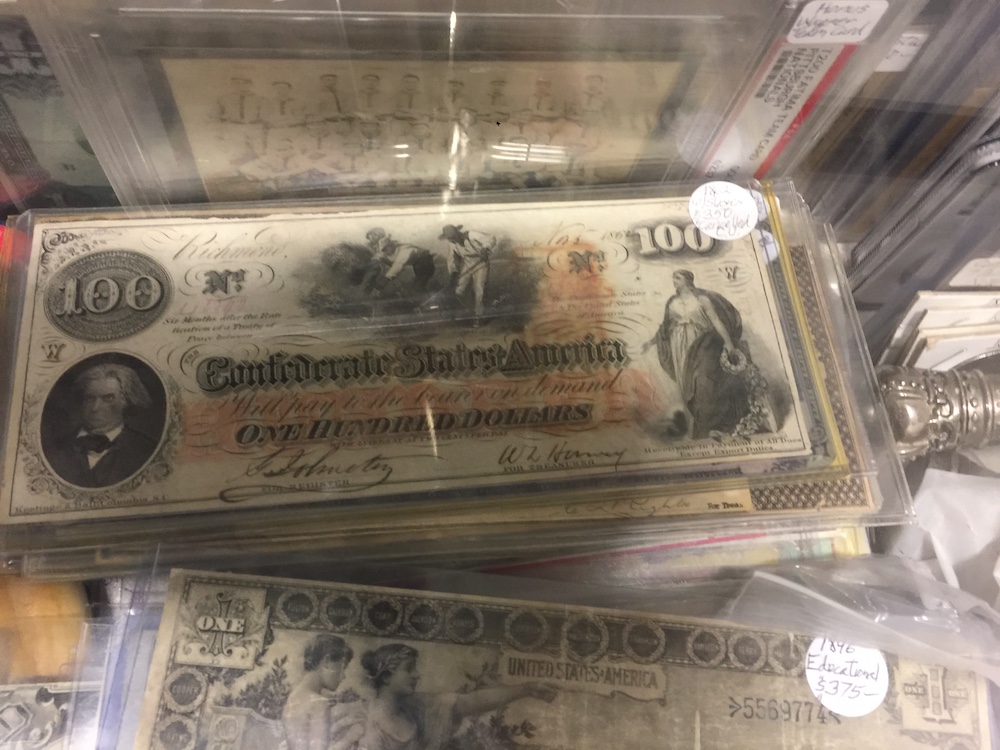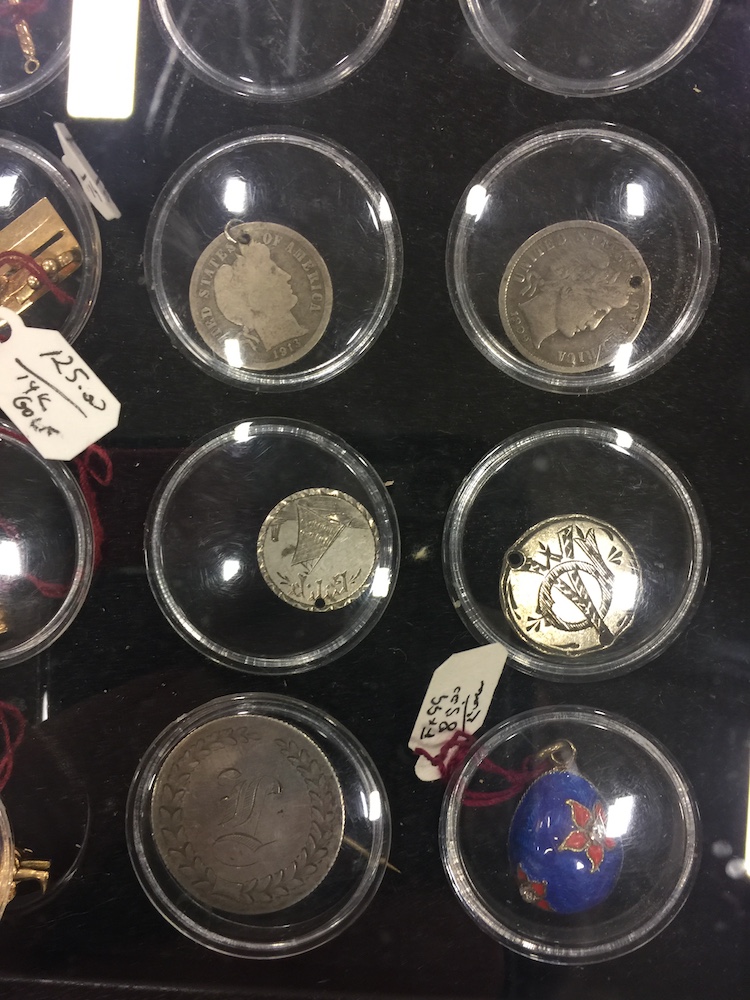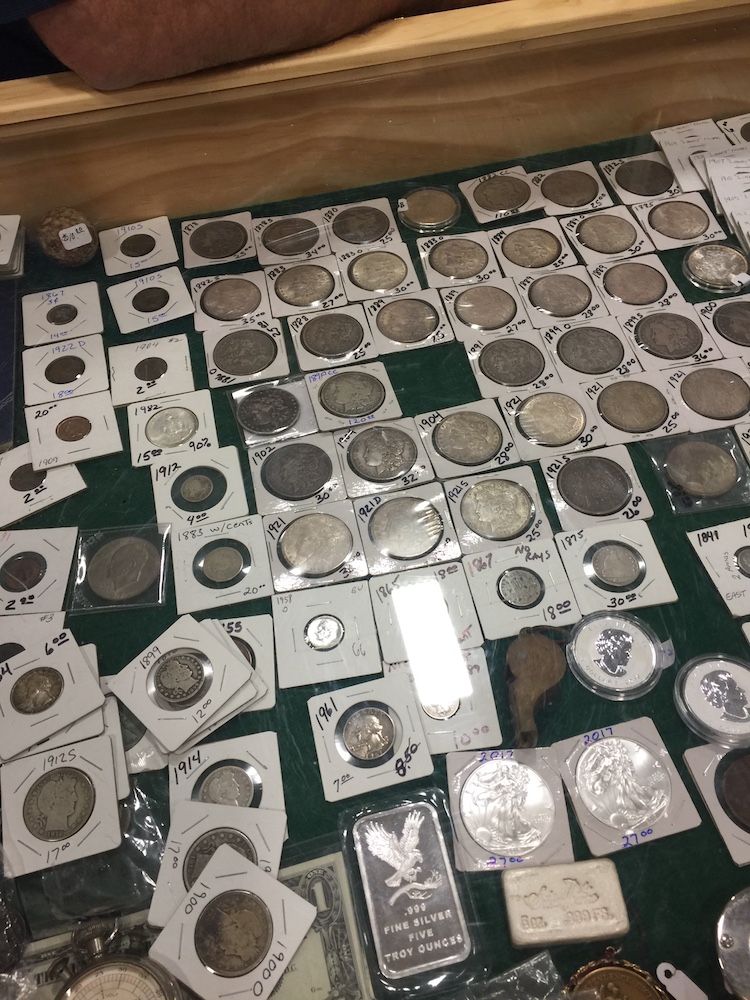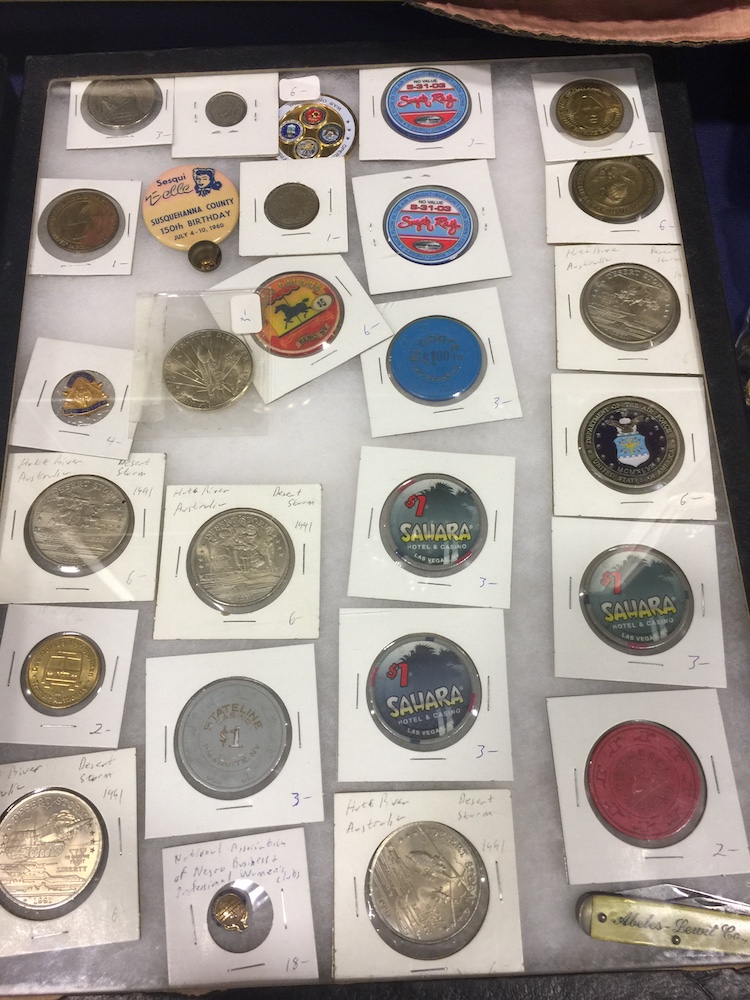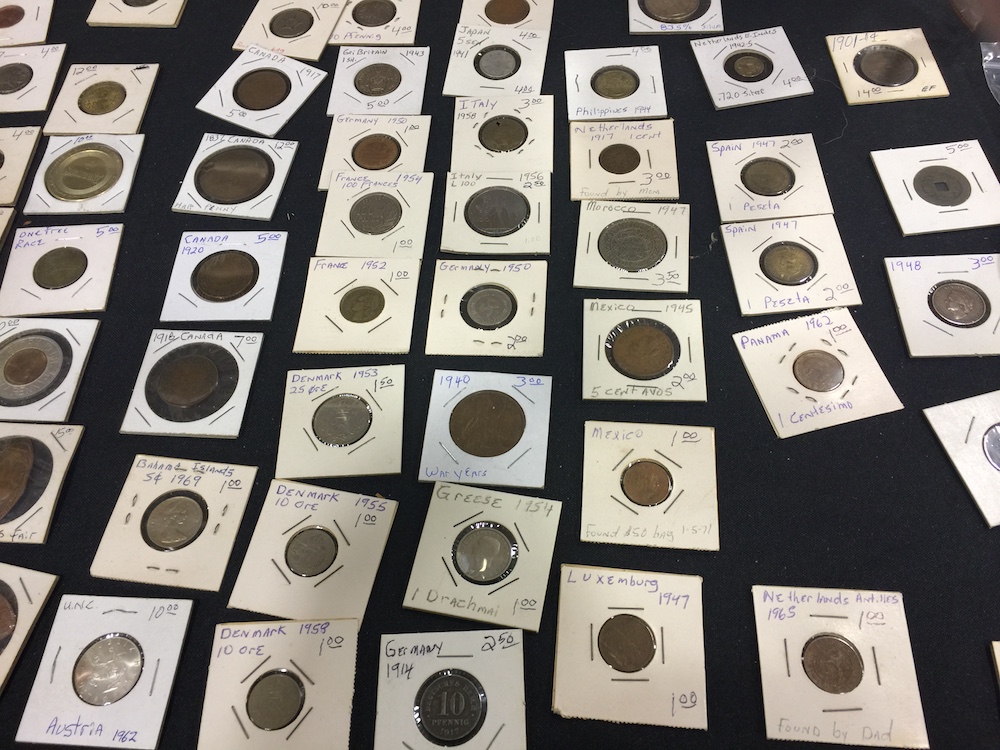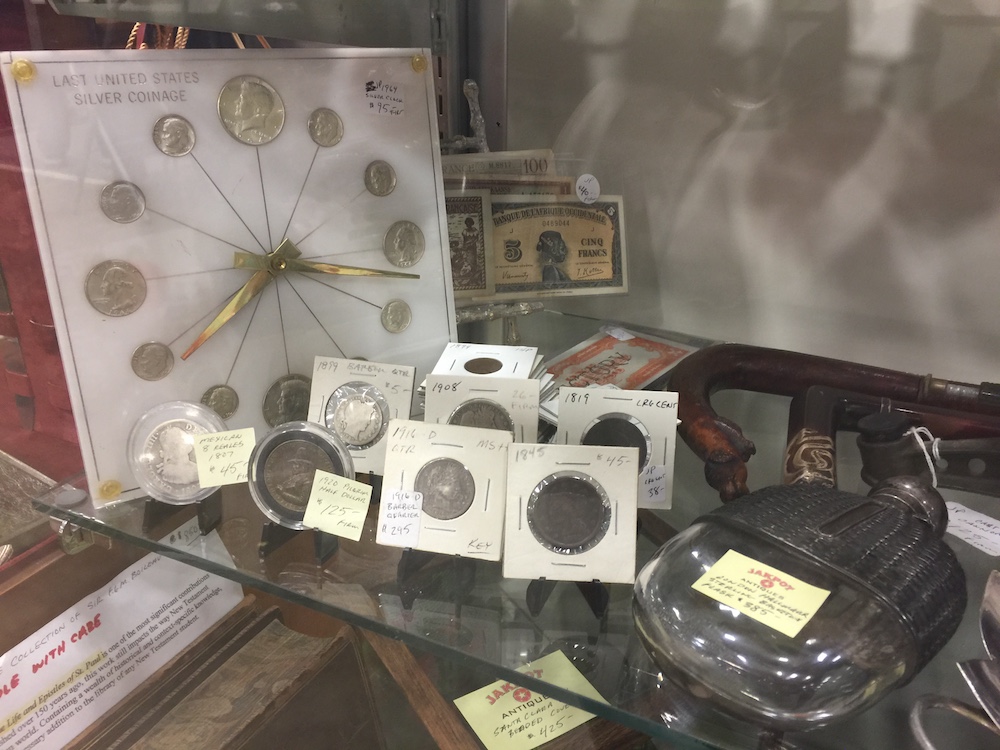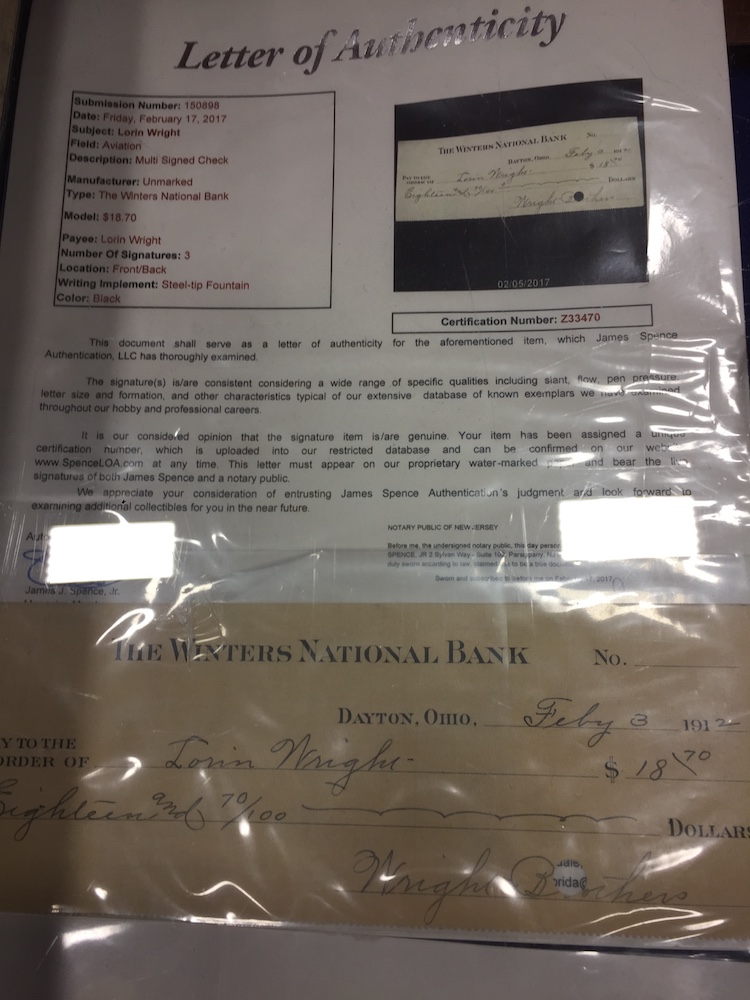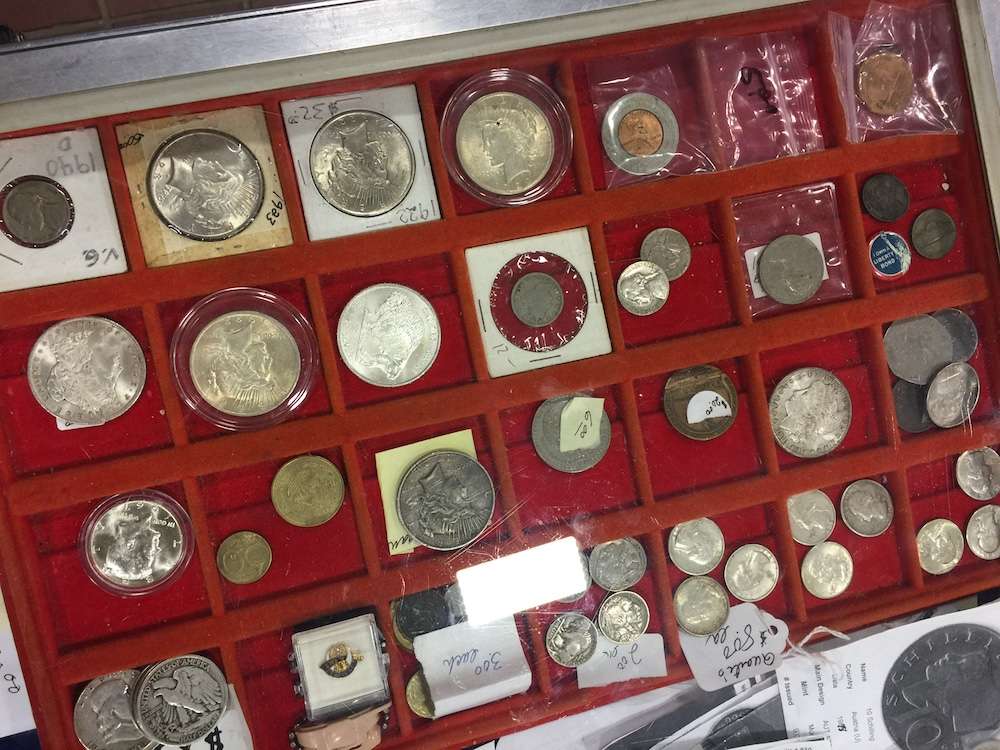Weekly World Numismatic News for July 11, 2021
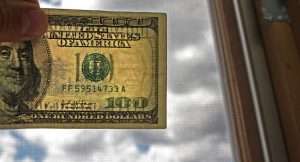
From 2019: An example of a $100 Federal Reserve Note printed on a bleached $5 note (Image courtesy of Prescott Police Department via AOL.com)
Stories that do not appear on the front page of the printed edition or the top of a website rarely receive the attention of the headline writers. Unless there is a murder or other major crime, most local crime stories do not earn over-the-top headlines. This week’s news has three examples of mundane headlines that display a concerning pattern about counterfeit coins and currency.
Counterfeit money has been a problem since its invention. Governments try to stop criminals from counterfeiting, but their efforts almost seem inevitable. The new trend appears to be the small-time criminals caught trying to make money from selling fake money to survive.
Recent stories about the arrest of counterfeiters report that the people are not career criminals trying to get rich. Those who are getting arrested are using the counterfeits for survival. The world economy has deteriorated to the point that buying and selling counterfeit money was worth the risk to buy a scooter to use as primary transportation.
The people caught passing counterfeit money admit it is not a mistake. In the statements to the police, they admit to using counterfeits to fill to earn a survivable living. Authorities continue to look for the distributors of the counterfeits.
And now the news…
 → Read more at dailymail.co.uk
→ Read more at dailymail.co.uk
 → Read more at tribuneindia.com
→ Read more at tribuneindia.com
 → Read more at fox2now.com
→ Read more at fox2now.com
 → Read more at ancient-origins.net
→ Read more at ancient-origins.net
 → Read more at saharareporters.com
→ Read more at saharareporters.com
 → Read more at sootoday.com
→ Read more at sootoday.com
 → Read more at greekreporter.com
→ Read more at greekreporter.com
News sparks change hunting
Since the news reports about the discovery of two 1943 Lincoln wheat cents struck on copper planchets hit the news, I have received a few inquiries as to whether they have a coin that could be worth tens- or hundreds-of-thousands-of-dollars. All are disappointed when they find out that grandpa’s old album may not be worth more than $50.00 if that much.
“But the coin is so old!”
Those of us who have been around this hobby for a while know that many factors go into pricing coins including supply and demand, condition, and other market forces. The considerations are so varied, that I wrote a two-part series on “How Coins are Priced” (links: Part I and Part II) that is still relevant.The 1943 copper Lincoln cent is known as an off-metal error. It probably happened when the U.S. Mint started to strike the 1943 Steel cents and a few copper planchets were probably still stuck in the machine. According to Coin World, there have been 12 reported 1943 copper cents.
Now that the coin has been reported in the mainstream media, be careful about buying counterfeits coins. Sources report that would-be fraudsters are either taking the abundant supply of steel cents at a cost of 50-cents to $2 each and plating them with copper. This type of counterfeit is easy to detect using a magnet. Copper is not magnetic and will not react to a magnet.
Another trick they try is to alter the “8” on a 1948 Lincoln cent to make it look like a three. If you carefully study the style used on the “3” and the “8” you will see that they are very different shapes on the coins. Also, if you look at the date under magnification, you could see the tooling marks. This is where carrying a 10x loupe is beneficial.
Otherwise, make sure the coin is encapsulated by a reputable grading service and that you check the serial numbers against the grading service’s database.
While it is nice to have the attention, please do not be disappointed when I tell you that the rusting 1943 steel cent is probably worth about 25-cents or that reprocessed set may be worth one- or two-dollars.
- 1943 copper Lincoln Cent courtesy of CoinTrackers.
- 1943 Steel Cent courtesy of the U.S. Mint.
- Image showing the diagnostics of an altered 1943 date courtesy of The Spruce.
Using coins to spread protest messages
As I am working on a manuscript about counterfeiting coins and currency, I started to search the internet for the location of some information when I stumbled on The British Museum’s website. Rather than find something about counterfeiting, searching the term “defacing coins” lead me to the most recent Curator’s Corner blog entry by Thomas Hockenhull, the curator of Modern Money for The British Museum.
For this entry, Hockenhull found a 1903 large penny with the words “VOTES FOR WOMEN” engraved over the head of King Edward III. It was done as part of the suffragist protests in England prior to World War I. Although not much of a presenter, The British Museum recorded a video featuring Hockenhull describing the coin and his research into how it might have come into existence. Rather than rehash what he said, you can watch the video here:
I have not to been to London for many years, but I remember spending a day at The British Museum was a highlight of the trip. It is one of the great museums of the world and worth setting at least one day touring the museum. There is so much to see that if you love to see the living embodiment of history, consider spending more than a day.
Royal Mint admits errors exist in new pound coins
After three years of design and production plans, the Royal Mint has produced what they are calling the most secure coin ever. The 12-sided, bimetallic coin includes micro-lettering, a latent image that is like a hologram, and something embedded in the metal to change its electromagnetic signature so that coin operated machines can detect counterfeits. These changes were made necessary by an effort criminals made to flood the market with counterfeit the previous £1 coin.
Initially, there have been complaints about coin-op systems not being able to accept the coin. Everyone from parking lots with metered and machined payment to the London Underground has been seen as not ready for the change even though the Royal Mint produced test coins in 2016 to help businesses convert. In England, where supermarkets charge to use the shopping cart in a manner that U.S. airports charge to use luggage carts, some major chains have unlocked their carts because they cannot accept the new £1 coins.
Acceptance is not the only problem they have run into. The new pound coins appear to have errors.
The first error to show up caused people to think that the coin was being counterfeited when the thistle on the reverse did not strike properly. The Royal Mint confirmed that these were not counterfeits. They were errors in the minting process. Although it was reported that the Royal Mint did not examine the coins, after seeing the images they said:
Next came the center-melt error. A woman in Birmingham found a coin that looks like the copper-nickel center melted across the coin. When minting bimetallic coins, the centers are supposed to expand in order to fuse it to the outer layers. The design crossed over the edges of the two metals to help with the anti-counterfeiting and to make sure the metals are locked into place. Since the coin is struck evenly, it is likely that either the alloy making up the center contains more of the softer nickel than specified, or that the coin was struck as second time causing the already fused centers to melt because of the friction.
A European coin expert familiar with the bimetallic minting process suggested that the pressure on the presses were set too high. This caused the coin to not eject properly from the collar leaving it in the machine for a second strike. The second strike on the higher pressure caused the center to melt and position the coin in a way to force it to eject. He is looking for an example to make a closer examination.
A final error find was the separation of the center from the outer ring. Even though the Royal Mint has said that this is impossible and all but accused the person who found the error of a crime (destroying coins is a crime in the United Kingdom), it is possible for the parts to separate if the strike pressure is not hard enough to fuse the centers to the rings. If the melting centers are caused by too heavy of the strike, the removable centers are caused by too light of a strike.
It is theorized that the Royal Mint has two possible issues: quality control when resetting the coining presses when changing the dies and a design that cannot handle the tolerances.
Even when dies are changed for coins struck on a planchet with a single metal, the press has to be adjusted to ensure the coins are struck with the proper force. Even if the dies are made by the same person and machines, they can be mounted millimeters off. Operators are supposed to run a few coins and check the striking tolerances. If the strike is too hard, it will cause the dies to wear quicker (the first error) and possible cause multiple strikes (the second error) when the coins get stuck in the collars. Set too soft and the friction does not generate enough heat to fuse the metals (third error).
Looking for errors on eBay’s UK site, errors include coins without Queen Elizabeth’s portrait and 2016 trial strikes given to merchants to test coin-op machines that ended up in circulation.
While the Brits are having fun with the Royal Mint’s error, it is nothing like the “Godless Dollar” outrage by the easily offended when the edge lettering with “In God We Trust” was accidentally left off of the Presidential dollars. Maybe the United States cannot handle change to their change!
April 2017 Numismatic Legislation Review
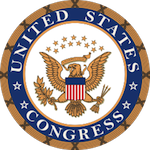 Not to be outdone, Rep. Steve Stivers (R-OH) introduced the Cents and Sensibility Act in the House (H.R. 2067) in order to force the change in our change. Stivers’ bill would require that circulating coins “be produced primarily of steel” and that “ be treated in such a manner that the appearance of the coins, both when new and after they have been in circulation, is similar to the one-cent, five-cent, dime, and quarter dollar coins, respectively, produced before the date of the enactment of this subsection.” This differs from the Currency Optimization, Innovation, and National Savings (COINS) Act (S. 759), introduced by Sen. John McCain (R-AZ), in that McCain’s bill would cease production of the one-cent coin, changes the composition of the five-cent coins, and ceases production of the $1 paper currency.
Not to be outdone, Rep. Steve Stivers (R-OH) introduced the Cents and Sensibility Act in the House (H.R. 2067) in order to force the change in our change. Stivers’ bill would require that circulating coins “be produced primarily of steel” and that “ be treated in such a manner that the appearance of the coins, both when new and after they have been in circulation, is similar to the one-cent, five-cent, dime, and quarter dollar coins, respectively, produced before the date of the enactment of this subsection.” This differs from the Currency Optimization, Innovation, and National Savings (COINS) Act (S. 759), introduced by Sen. John McCain (R-AZ), in that McCain’s bill would cease production of the one-cent coin, changes the composition of the five-cent coins, and ceases production of the $1 paper currency.
I don’t think either bill has a chance of being passed but if I had to pick one, I would prefer McCain’s COINS Act.
H.R. 2067: Cents and Sensibility Act
This bill can be tracked at http://bit.ly/115-HR2067.
S. 921: Duty First Act
This bill can be tracked at http://bit.ly/115-S921.
H.R. 2256: To require the Secretary of the Treasury to mint coins in recognition of Christa McAuliffe.
This bill can be tracked at http://bit.ly/115-HR2256.
Flea market coin hunting
One thing I like about this business is the variety of items that you can find. Aside from the various antiques and collectibles, there are a lot of interesting numismatic items that you may not find at a coin dealer’s table at almost any show. Most of these are not high priced items but are very interesting. For example, while Love Tokens can bring a nice premium, only a few specialized dealers would carry them. Since most of the dealers are also pickers. They will buy all of this stuff and bring it to a show like this.
A couple of smamples that I missed taking pictures of includes someone who had a coffee cup full of buffalo nickels for 25-cents a coin. After searching through most of the coins, all of them had at least a partial date. Not a dateless coin to be found. Another dealer was selling circulated Morgan dollars in VG-to-XF condition for $20 a coin, which is pretty good since the catalog value of most of these coins are $25-45 each. Current melt value of Morgan dollars is a little more than $14.
Although I do not have coins in my inventory at this show, you could have come by and bought a Red Book from one of the contributors, cheap!
Here are the pictures uploaded directly from my iPhone:
- Page of odds and ends including a hammered coin, love token, and Hobo Nickel
- A $100 Confederate States of America note
- 1901 $10 Dollar Lewis and Clark Bison note (Fr# 122), Elliot-White
- A small selection of Love Tokens
- Lots of silver dollars and many at very good prices
- Medals, awards, casino chips, and a Challenge Coin
- Casino chips and challenge coins make for an interesting display option!
- Some decent Buffalo Nickels, although some of these prices are a little high for their condition
- A layout of foreign coins. I bought the 1920 Canada Large Cent to the left
- The clock on the left is an old Capital Plastics holder. It is the first time I have seen one.
- Bracelets are made from Australian pre-decimalisation coins that have been gold plated
- Check written to Lorin Wright from her brothers. Lorin Wright endorsed the check on the reverse.
- Tray of miscellaneous coins.







